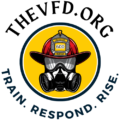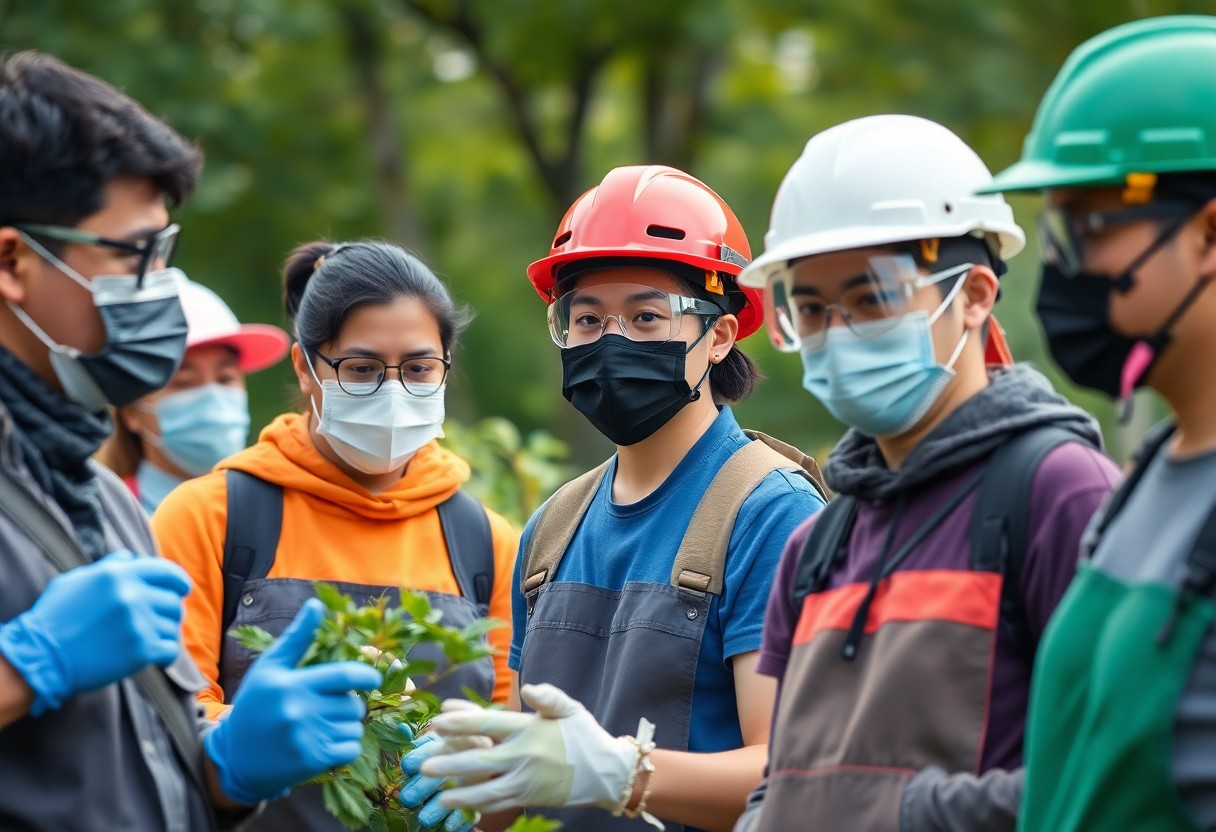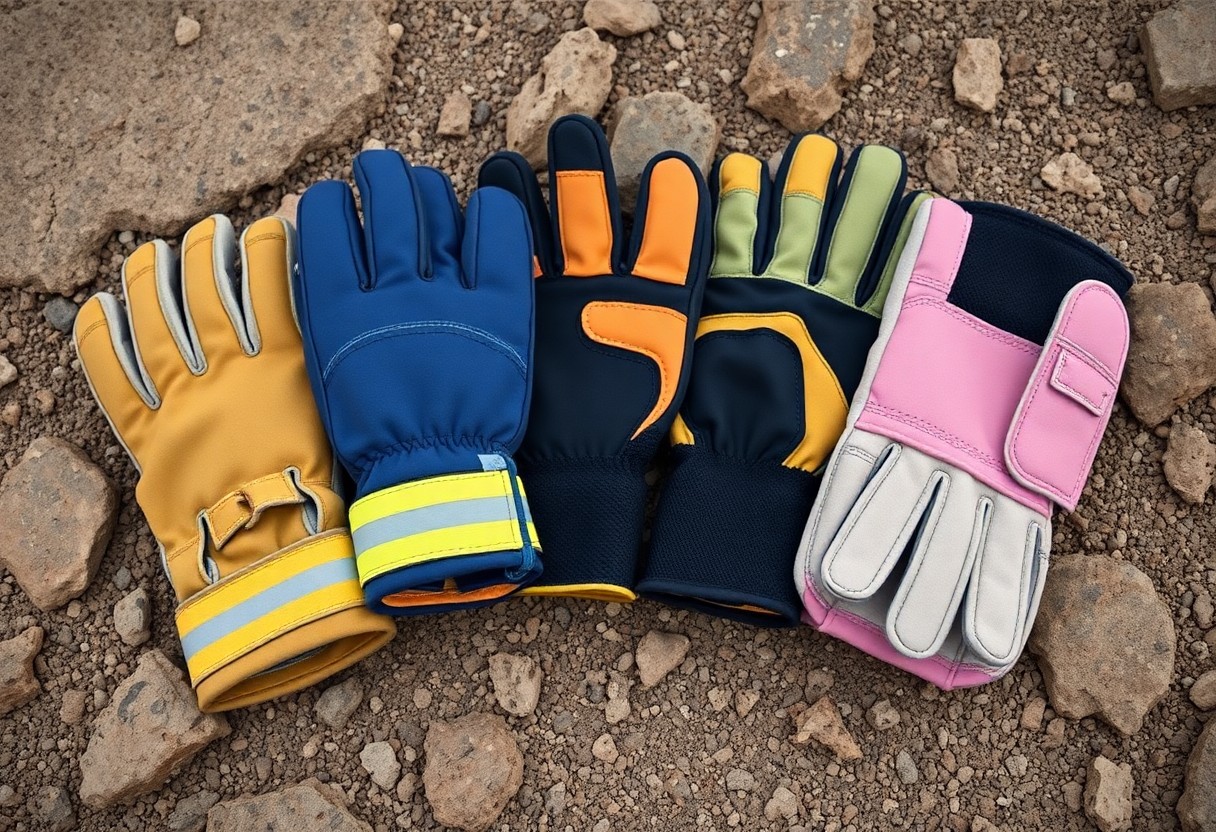Over the course of your volunteer-driven projects, ensuring the safety of your team is crucial to fostering a productive and healthy environment. Understanding effective personal protective equipment (PPE) best practices can significantly mitigate risks and enhance your volunteers’ well-being. In this blog post, you will explore practical strategies to properly equip your volunteers with the appropriate PPE tailored to their tasks, ensuring that safety remains a top priority while they contribute to your mission. Let’s explore the steps you need to take to protect and empower your team.
Understanding PPE
A comprehensive understanding of personal protective equipment (PPE) is crucial for ensuring the safety of your volunteers. PPE refers to various clothing and equipment designed to protect individuals from potential hazards in their environment. Effectively utilizing PPE can help mitigate risks, making your volunteer program safer and more efficient.
Types of PPE
- Gloves
- Goggles
- Face Shields
- Protective Clothing
- Respirators
Assume that the adequate use of these items will greatly reduce exposure to workplace hazards.
Now, let’s take a closer look at some common types of PPE:
| Type of PPE | Purpose |
| Gloves | Protect hands from chemicals and infections |
| Goggles | Shield eyes from debris and liquids |
| Face Shields | Provide full facial protection from splashes |
| Protective Clothing | Prevent skin exposure to hazardous substances |
Importance of PPE in Volunteer Safety
Little do many realize that PPE is a fundamental aspect of safeguarding your volunteers during activities. By ensuring your team is properly equipped with the necessary protective gear, you can significantly reduce the likelihood of accidents and injuries.
It becomes increasingly clear that prioritizing PPE is an investment in the well-being of your volunteers. When they feel safe and protected, their confidence in performing tasks enhances, allowing them to be more effective in their roles. In turn, this leads to a positive atmosphere within your organization while fostering a culture of safety. Ultimately, this proactive approach to PPE not only protects your team but also strengthens the foundation of your volunteer program.
Assessing Risks
Clearly, assessing risks is fundamental in ensuring the safety of your volunteers. You must first identify potential hazards within your organization that could pose a threat during volunteer activities. This proactive approach allows you to implement effective safety measures and ensure that volunteers are equipped with the necessary personal protective equipment (PPE). Regular risk assessments not only help you understand the specific needs of your volunteers but also demonstrate your commitment to their safety.
Identifying Potential Hazards
While evaluating your operations, you should systematically identify potential hazards that could impact your volunteers. Common risks may include environmental factors, equipment-related dangers, and even biological threats. Conducting thorough walkthroughs of your workspaces and engaging with volunteers to gather feedback will empower you to pinpoint where risks may arise.
Evaluating Volunteer Activities
Volunteer activities can vary widely, and each comes with its own set of unique risks that must be evaluated. You should assess the tasks volunteers will perform, the tools or equipment they will use, and the environments in which they will work. Understanding these elements is key to developing an effective risk management plan that incorporates appropriate PPE and training.
Potential risks associated with volunteer activities may include physical injuries, exposure to hazardous materials, and psychosocial stressors. By closely analyzing the specific tasks your volunteers will engage in, you can tailor your safety protocols. Ensure you provide the right PPE that fits the challenges they are likely to encounter, and offer training sessions that prepare them for unforeseen situations. This thoughtful evaluation enhances safety and fosters a supportive environment for all involved.
Selecting Appropriate PPE
Some volunteers may work in varying environments, necessitating the careful selection of personal protective equipment (PPE). It’s crucial to match the right PPE to the specific tasks and risks faced by your volunteers, ensuring they are adequately protected from hazards they may encounter.
Factors to Consider
The selection process involves evaluating a multitude of factors that influence PPE effectiveness:
- Type of work and associated hazards
- Comfort and usability of the equipment
- Training provided on PPE usage
- Environmental conditions where work will be performed
After considering these factors, you can make informed decisions about which PPE will best ensure the safety of your volunteers.
Sizing and Fit Guidelines
On top of selecting PPE materials and styles, adequate sizing and fit are vital to ensure that your volunteers are protected effectively. Properly fitting PPE can significantly reduce the risk of injury, as loose or overly tight equipment can hinder movement and decrease comfort.
Selecting the appropriate size involves measuring your volunteers and referring to manufacturer sizing charts to ensure a good fit. Offer various sizes to accommodate different body types, and conduct trial fittings whenever possible. This step will help you verify that the PPE is worn correctly, allowing freedom of movement while providing optimum safety. Don’t hesitate to modify or replace ill-fitting equipment to keep your volunteers protected and comfortable.
Training Volunteers
Despite the importance of PPE, it is vital to provide thorough training for your volunteers. Ensuring they understand how to properly use equipment not only protects their safety but also enhances their confidence in performing their roles. This training should cover the specific hazards they may face and the appropriate PPE required for each task, along with scenarios they may encounter in the field.
PPE Usage Training
Even the most advanced PPE is ineffective without proper usage training. Teaching your volunteers how to wear, adjust, and remove PPE can significantly reduce the risk of injury. Include practical demonstrations and hands-on practice sessions to help them become comfortable and proficient with their gear. Regular refresher courses can also reinforce their understanding over time.
Best Practices for Maintenance
Little attention is often given to the maintenance of PPE, yet it plays a fundamental role in ensuring safety. Regular inspection, cleaning, and proper storage of PPE must be implemented as part of your program. These practices not only extend the lifespan of the equipment but also ensure that it functions effectively when needed.
To maintain your volunteers’ PPE, establish a clear schedule for inspections and reinforce the significance of identifying signs of wear or damage. Provide your volunteers with guidelines on cleaning techniques specific to their gear, and emphasize that PPE should be stored in a clean, dry environment to prevent degradation. By prioritizing maintenance, you enhance the protective qualities of the equipment and promote a culture of safety among your volunteers.
Creating a Safety Culture
All organizations benefit from fostering a safety culture that prioritizes the well-being of volunteers. By establishing a shared commitment to safety, you empower your team to take individual responsibility for their health and security while participating in activities. This supportive environment encourages compliance with safety protocols and helps identify potential hazards, ultimately enhancing the experience for everyone involved.
Encouraging Open Communication
An open communication channel is necessary for maintaining a strong safety culture. You should create an atmosphere where volunteers feel comfortable sharing their concerns, reporting issues, and suggesting improvements. By actively soliciting feedback, you demonstrate that their input is valued and that safety is a collective responsibility.
Regular Safety Meetings
Clearly scheduled safety meetings play a vital role in reinforcing your organization’s commitment to volunteer safety. These gatherings provide an opportunity for you and your volunteers to review safety protocols, discuss recent incidents, and assess any changes in procedures. Regular meetings also help foster teamwork and ensure everyone stays informed about best practices.
Encouraging regular safety meetings not only keeps your volunteers informed but also creates a sense of unity. During these sessions, allow for open discussions about safety concerns, and showcase real-life scenarios to emphasize their importance. By consistently engaging your volunteers in safety dialogues, you can build trust and confidence, ensuring they feel more prepared and supported in their roles.
Monitoring Compliance
Now that you have established PPE protocols, it is necessary to monitor compliance to ensure the safety of your volunteers. Regular checks will help you identify any gaps in adherence to the standards set and allow you to make necessary adjustments. This oversight not only protects your volunteers but also reinforces the importance of safety culture within your organization.
Checking PPE Usage
Even with thorough training, some volunteers may forget or neglect to use their PPE correctly. Conduct regular inspections to verify that volunteers are wearing the appropriate gear, and provide friendly reminders when necessary. Checklists can help streamline this process and ensure nothing is overlooked during evaluations.
Addressing Non-Compliance Issues
One of the biggest challenges in maintaining PPE compliance is addressing non-compliance issues in a constructive manner. You want to ensure volunteers understand the significance of what is at stake without feeling alienated.
Addressing non-compliance should be handled promptly and with care. Approach volunteers who consistently fail to comply with PPE requirements privately to understand their reasons. It may be a lack of understanding, incorrect equipment, or even complacency. By facilitating open dialogue and offering additional training or resources, you encourage positive behavior change while reinforcing your organization’s safety standards. Be sure to recognize and celebrate individuals who consistently comply, fostering an environment where safety is valued.
Summing up
As a reminder, ensuring the safety of your volunteers through proper PPE practices is vital for fostering a secure and effective environment. You should assess the specific risks associated with your activities and provide appropriate PPE to your volunteers, ensuring it fits well and complies with safety standards. Regular training and education will empower your team to utilize their gear correctly. By prioritizing these best practices, you enhance the well-being of your volunteers and the overall success of your initiatives.



